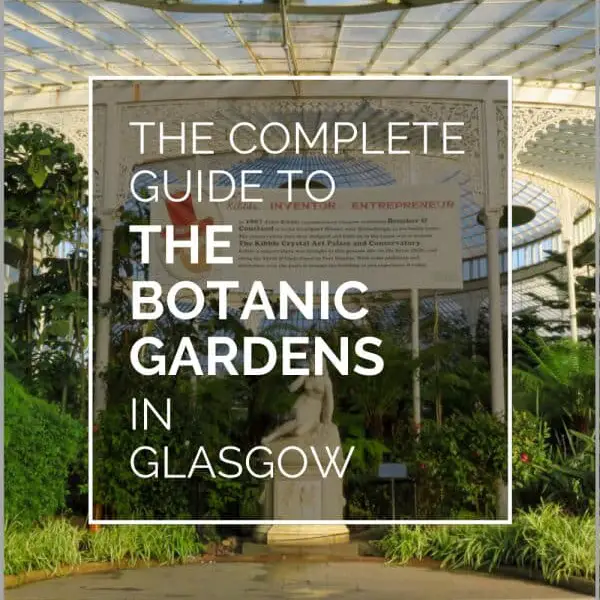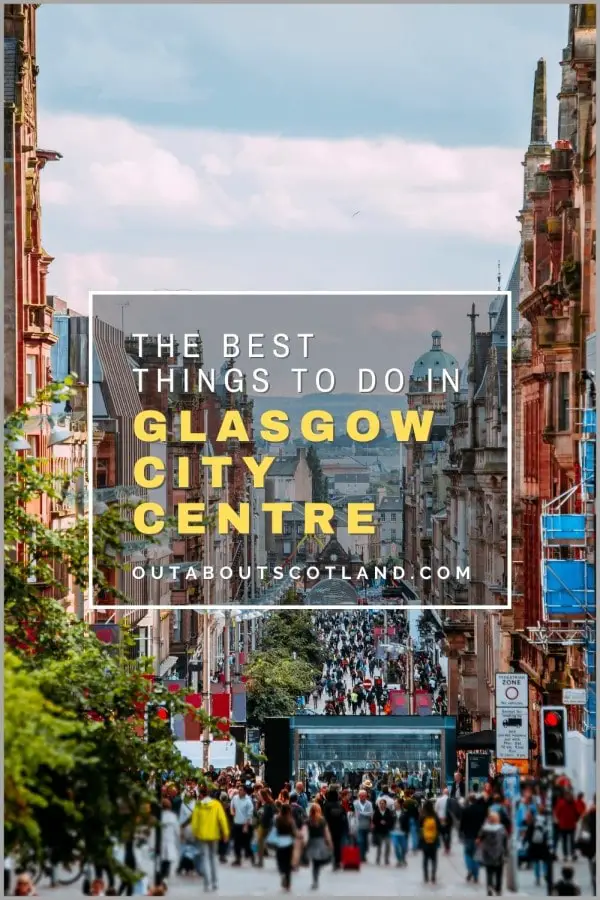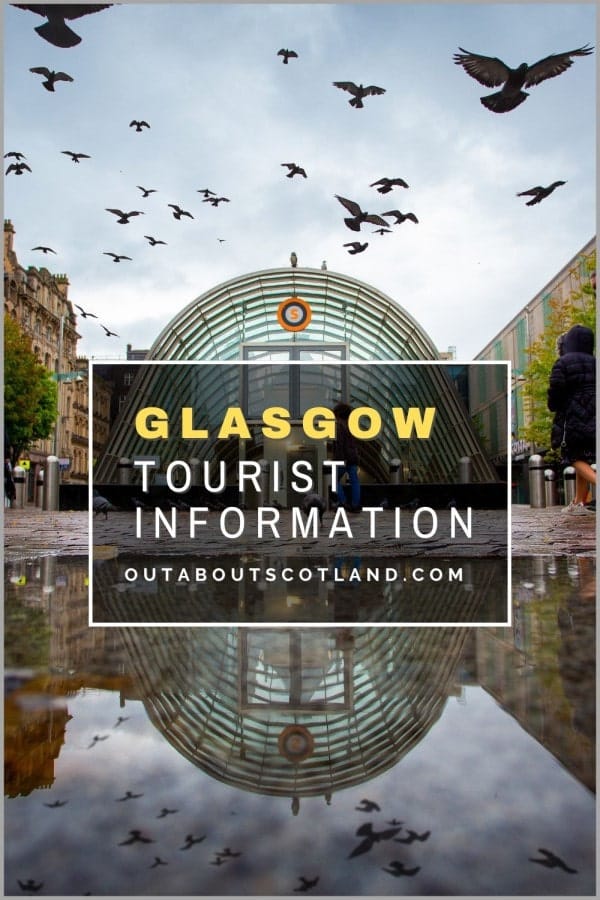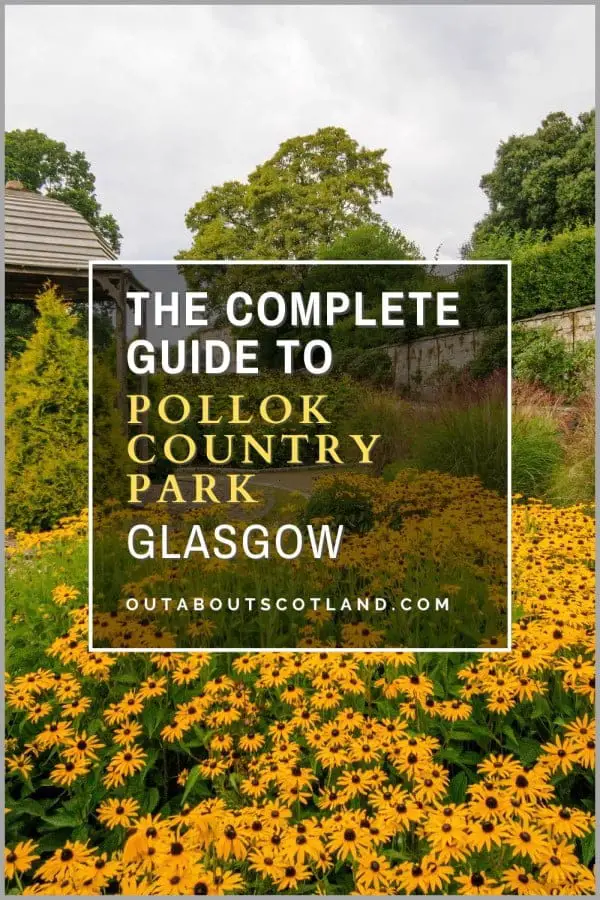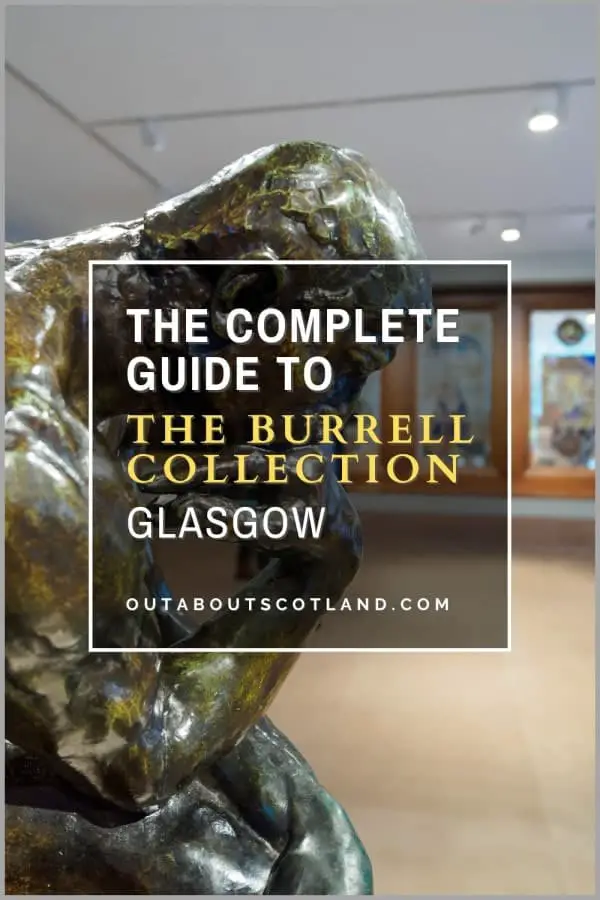The Glasgow Botanic Gardens are a green oasis of plant life from across the globe, located right in the heart of the city’s West End on Great Western Road.
There are several attractions in the gardens, including a Victorian glasshouse, a large tropical greenhouse, a café, lawns, and a maze of paths through trees and flowerbeds. Entry is free, and the gardens are open 7 days a week.
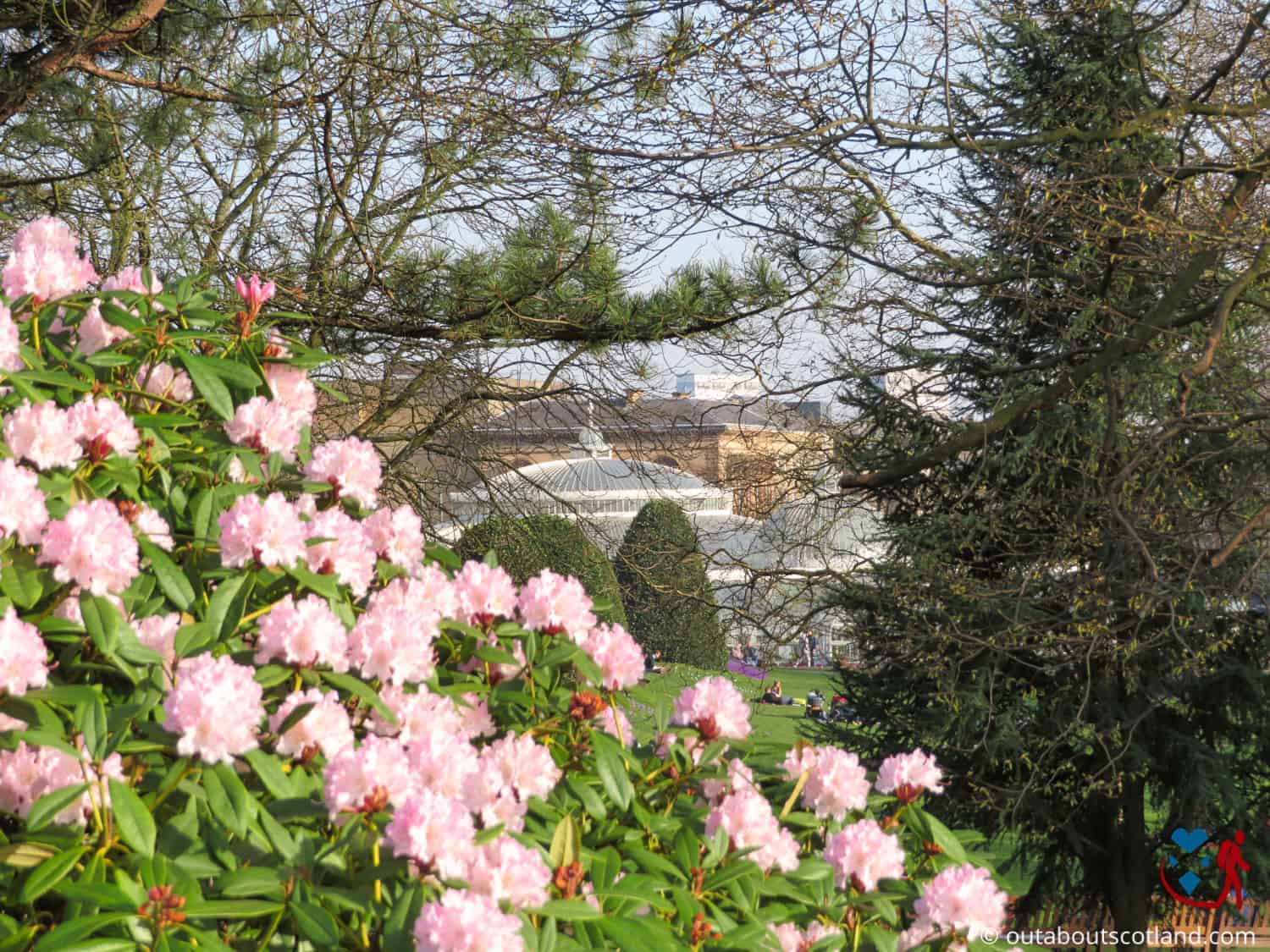
| Address: | Great Western Road, Glasgow, G12 0UE |
| Opening Hours: | Grounds 7 am - dusk (all year) Glasshouses: Summer 10 am - 6 pm, Winter 10 am - 4 pm |
| Admission Price: | Free |
| Parking: | None |
| Contact: | 0141 276 1614 |
| Facilities: | Cafe, shop, toilets, disabled access |
| Photos: | Virtual Tour YouTube Video |
Overview
If you’ve ever visited Glasgow you’ll know it has a huge number of attractions, most of which are free and are either in or surrounding the city centre, though the majority are either museums, historic buildings, or modern family-themed attractions.
There are several public parks, such as the superb Glasgow Green and Kelvingrove Park, but those sites are often crowded, especially in the summer. Thankfully, there’s another option near the city centre that offers a chance to enjoy nature: the Glasgow Botanic Gardens.
Like Edinburgh’s RBGE, Glasgow’s gardens showcase a huge variety of plants from across the globe, and among the immaculately manicured lawns and flower beds you’ll find collections of herbs, tropical ferns, ornamental plants, and exotic flowers, all surrounded by hundreds of trees in a setting that’s perfect for a sunny afternoon stroll.
The highlight of the attraction is the magnificent glasshouse, the Kibble Palace, that dominates the entrance, where you’ll find a variety of ferns, ornate statues, and water features. The wrought-iron-framed glasshouse underwent a £7 million restoration in the mid-2000s to prolong the life of the plants inside it – some of which have lived in the 19th-century structure for over 120 years – so it’s no surprise that Glasgow Botanic Gardens has been awarded a coveted Green Flag Award.
The Glasgow Botanic Gardens really are a first-class attraction, and they’re highly recommended if you want to get away from the usual museums and shopping malls that feature in so many sightseeing itineraries.
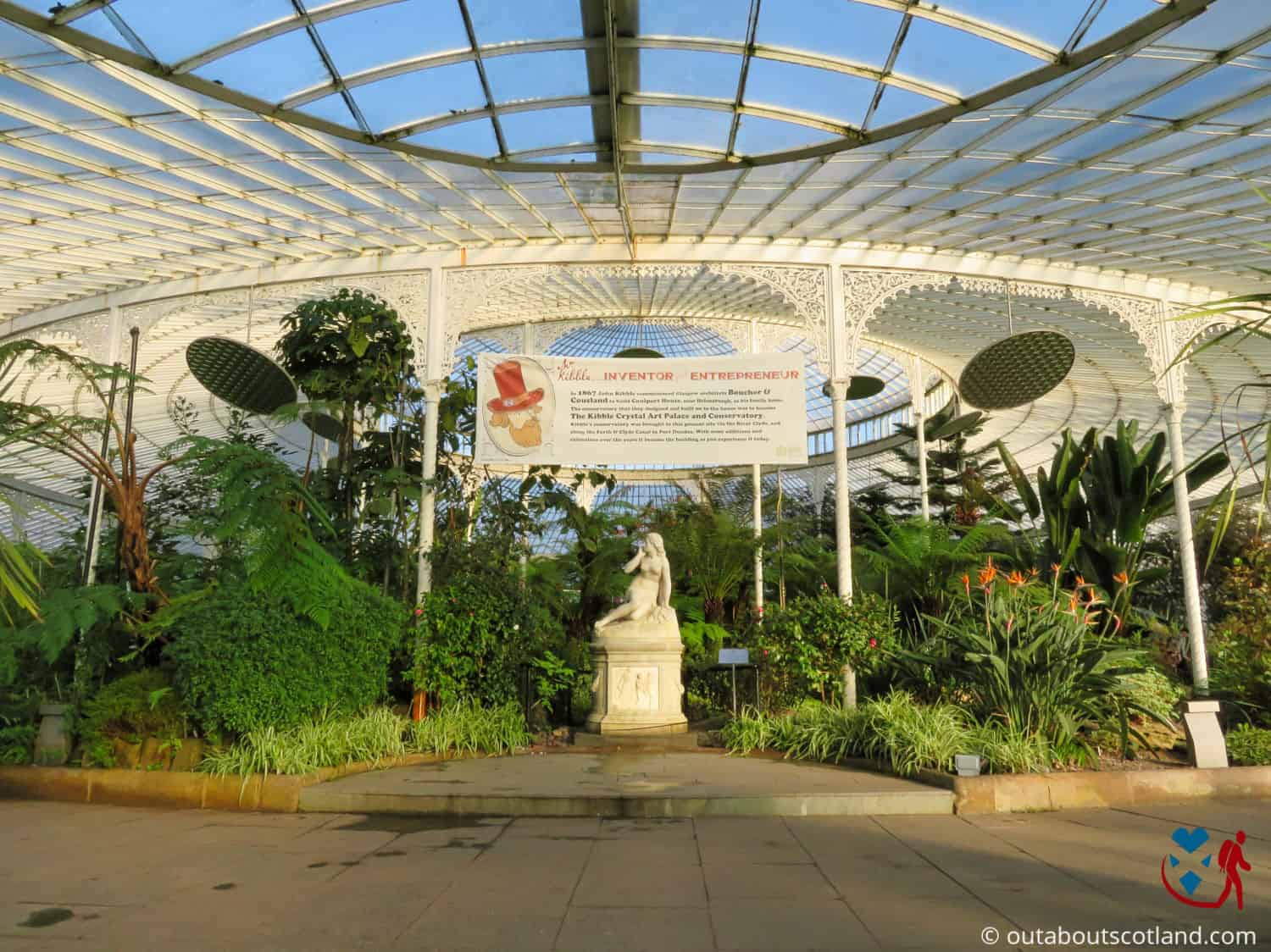
The Highlights
1: The Kibble Palace, a wrought iron-framed glasshouse that John Kibble designed in the 19th century, is one of the Glasgow Botanic Gardens’ most striking features. This grand Victorian greenhouse is home to the national collection of tree ferns as well as a wide variety of tropical plants, some of which are rare and endangered.
2: Visitors can enjoy a leisurely stroll through the formal gardens, arboretum, and herbaceous borders which showcase an impressive array of plants and flowers. The gardens change with the seasons, providing a different experience throughout the year.
3: The gardens host a variety of events including plant sales, guided tours, workshops, and exhibitions. The gardens also provide an engaging and educational experience for children and families, with activities designed to teach all ages about plant life and the environment.
Visiting Tips
1: To fully enjoy the glasshouses, check the opening times before you go as times can change depending on the season. Give yourself plenty of time to wander and appreciate the diversity of the plants and the beauty of the structures themselves.
2: The gardens are quite a walk from the city centre (45 minutes to George Square), so I recommend taking the bus. Look for the number 6 simpliCITY towards Anniesland.
3: The Glasgow Botanic Gardens often host a variety of events, from plant sales and educational workshops to cultural festivals and open-air theatre performances. Before you visit, check the gardens’ official website or social media pages for any scheduled events that might be of interest.

Tourist Information
While Glasgow is best known for its museums, theatres, shopping, and nightlife, the botanic gardens offer an experience that’s a world away from anything else in the city centre. The gardens are laid out in an informal style, with meandering paths zig-zagging their way through each section, and there are plenty of quiet lawn areas that are perfect for sitting down with a picnic on those rare days when it’s sunny (yes, we do get sun in Glasgow).
When it’s raining, you can escape into two large glasshouses, the first of which, the previously mentioned Kibble Palace, is an iron and glass Victorian masterpiece that’s worth exploring whatever the skies are doing. It’s surprisingly big inside and very airy, and with so many ferns on display it feels like you’re in the middle of a tropical paradise rather than Scotland’s biggest city.
Also inside the ‘palace’ is a giant pool of tropical fish and a mini-maze of plants, so you should be kept occupied for at least half an hour before heading back outside to investigate the rest of the gardens.
The second, much newer steel-framed glasshouse isn’t attractive at all, but it houses a surprising amount of rare and beautiful flowers as well as a tropical pond and a copse of exotic trees.
The rest of the site covers quite a large area between Great Western Road and the River Kelvin, and there are benches dotted about if you want to sit down and enjoy the plant life. If you’re after a cuppa and a slice of cake you can always head over to the former curator’s house near Kibble Palace which has been turned into a tearoom.
Away from those areas, you’ll find a maze of tarmacked paths that allow access for pushchairs and wheelchairs, and the Kelvin Walkway is just a short walk across a bridge at the rear of the gardens. From there, you can take a stroll to Kelvingrove Park and the amazing Kelvingrove Art Gallery and Museum or you can cross back over the River Kelvin to explore the stunning University of Glasgow and the Hunterian Museum.
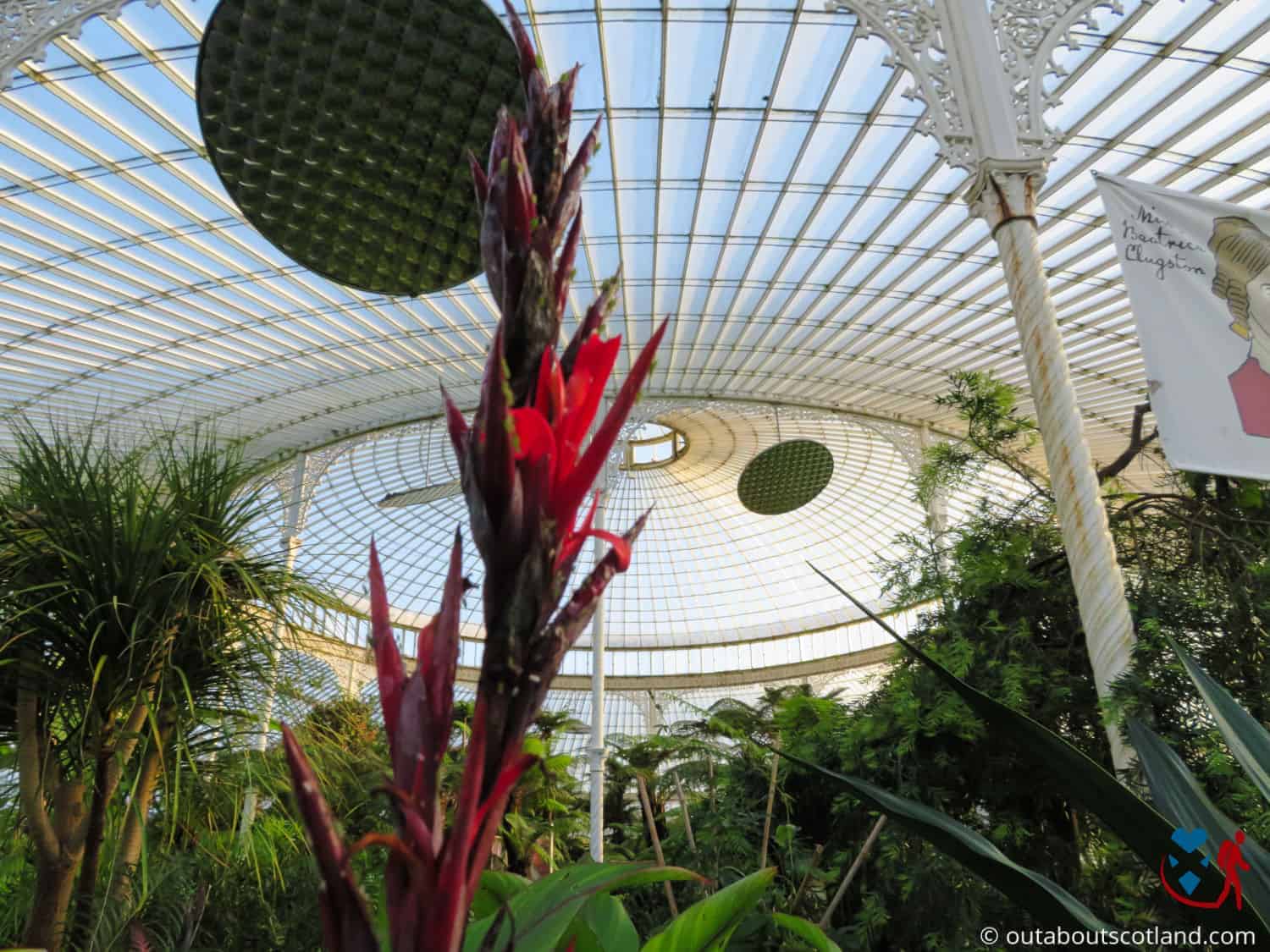
History
Although they’re very different from when Thomas Hopkirk founded them in 1817, Glasgow’s Botanic Gardens celebrated their 200th anniversary in 2017. Hopkirk, a distinguished botanist, originally created the gardens on an 8-acre site at the western end of Sauchiehall Street to provide the city university with plants for medicinal and botanical classes.
As the gardens flourished and new varieties were donated, the number of plants quickly grew from their initial 3,000 to an impressive 12,000 specimens, and in 1839 it was decided to move the entire garden to a new site on the banks of the River Kelvin.
The last major addition to the Glasgow Botanic Gardens was the installation of Kibble Palace, which had originally been used as a private conservatory but was moved to its present location in 1873 where it was used as a concert hall until it was converted to house the national collection of tree ferns in 1879.
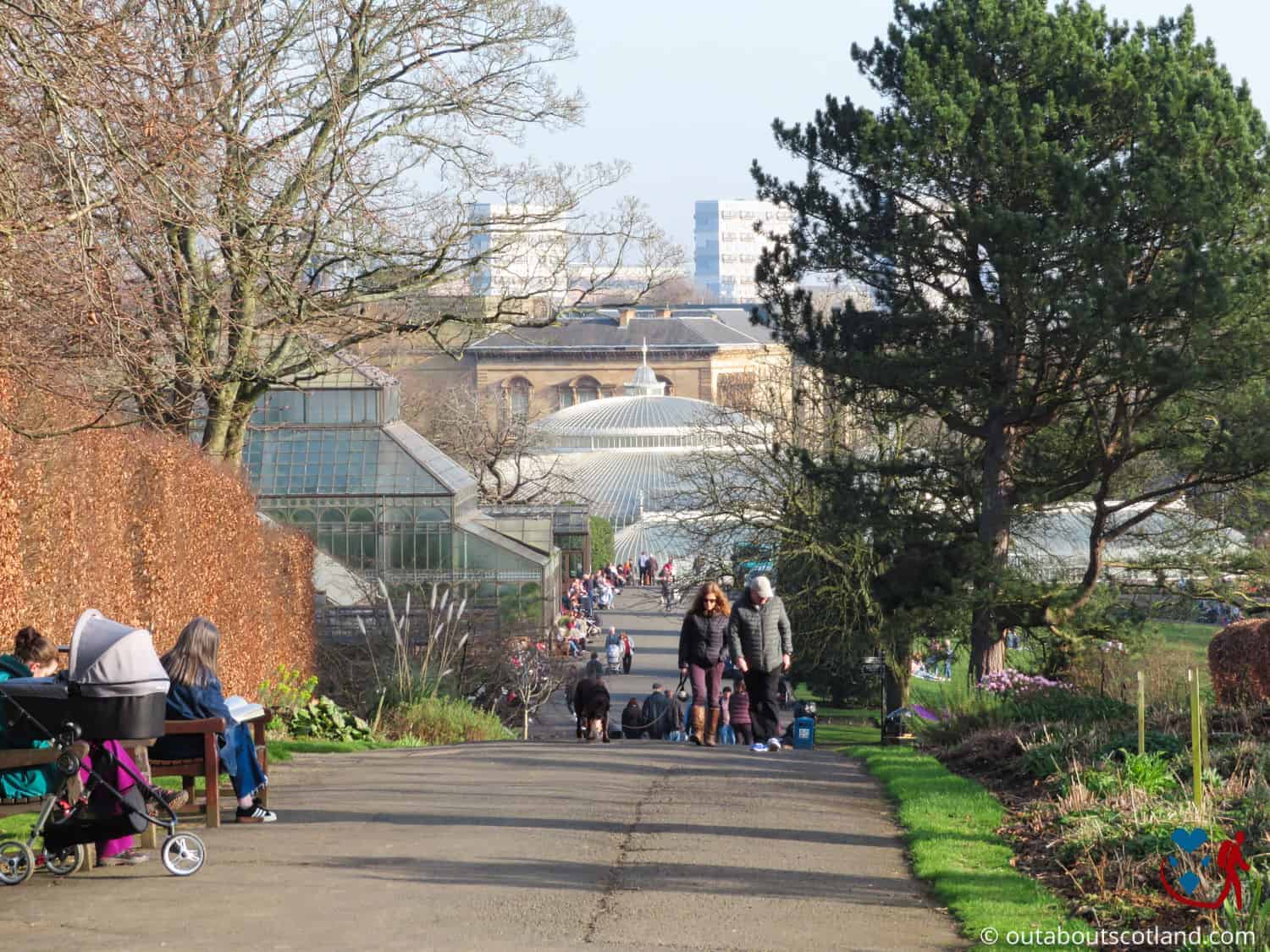
Things to Do
Explore the Kibble Palace: The Kibble Palace is a magnificent glasshouse filled with a unique collection of tropical plants and ferns. This Victorian-era marvel features an intricate ironwork structure where you can marvel at the beauty of plants from around the world.
Participate in a Guided Tour: Join an informative guided tour that delves into the history and horticulture of the gardens. These tours offer a deeper understanding of plant species and their origins under the direction of knowledgeable guides.
Visit the Herb Garden: The Herb Garden is a fascinating place to learn about the various uses of plants in medicine, cooking, and beauty. Discover the different aromas, textures, and colours of herbs that have been used in cooking and traditional therapies for hundreds of years.
Attend a Seasonal Event: The Glasgow Botanic Gardens frequently hosts seasonal events like flower shows, Christmas fairs, and Halloween trails. These events often feature local artisans, food vendors, and activities for children, providing a day of fun for the whole family.
Enjoy a Picnic: With a variety of manicured lawns and scenic spots by the River Kelvin, Glasgow Botanic Gardens offer plenty of places for a picnic. Enjoy a leisurely lunch while listening to the calming sounds of birds singing and rustling leaves.
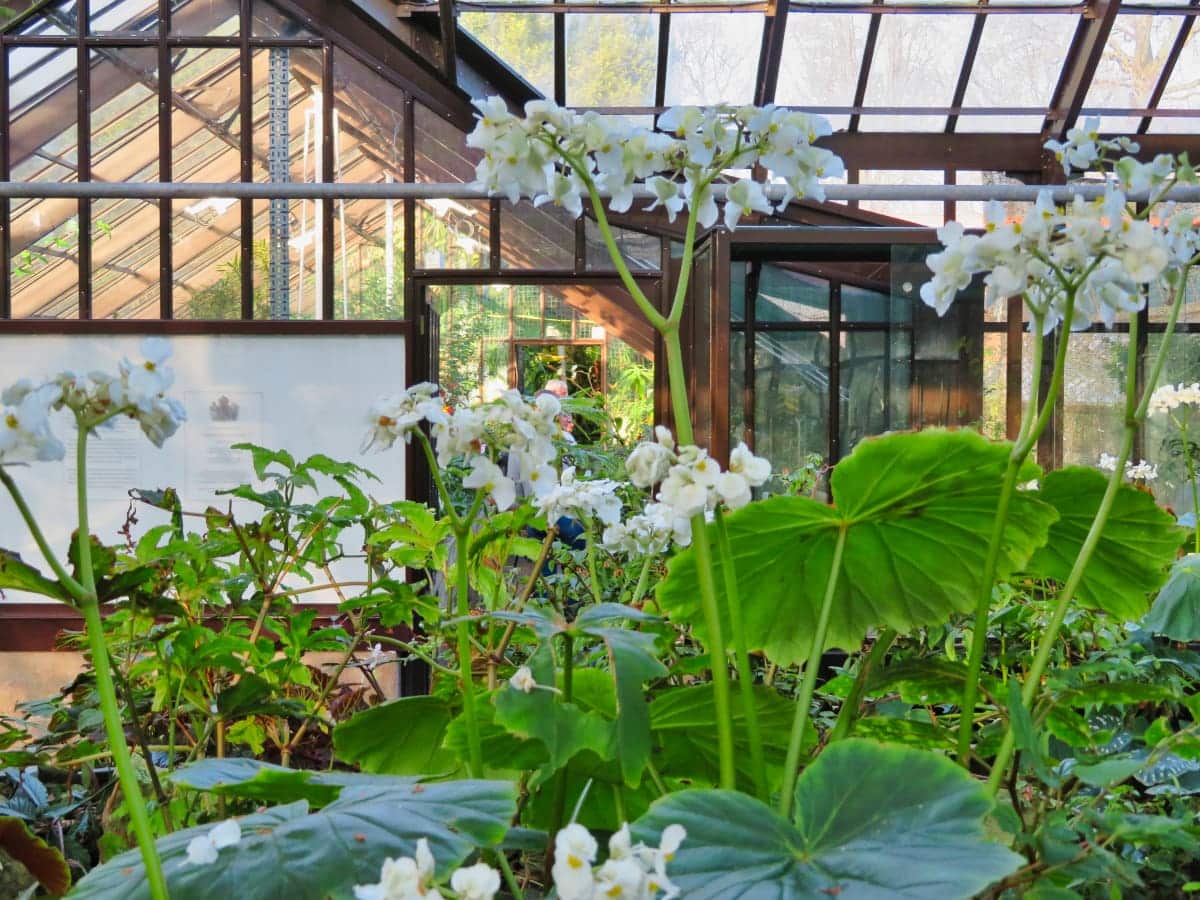
Things to Do Nearby
Kelvingrove Park. 6 Professors’ Square, Glasgow G3 6BY. 17-minute walk.
One of the oldest public parks in Scotland. Kelvingrove Park features a collection of memorials, walking paths, sports areas, the River Kelvin, and the Kelvingrove Museum.
Kelvingrove Art Gallery and Museum. Argyle St., Glasgow, G3 8AG. 23-minute walk.
Kelvingrove, one of Scotland’s most-visited museums, offers a diverse range of exhibits from across the globe. The museum is situated near the west end of the 84-acre Kelvingrove Park. Entry is free.
The Hunterian Museum. University of Glasgow, 82 Hillhead St., Glasgow, G12 8QQ, is a 14-minute walk.
A free-to-enter museum located inside the University of Glasgow. The museum displays artefacts from many areas of study, including zoology, medicine, and history.
The University of Glasgow. Glasgow G12 8QQ. 13-minute walk.
The university offers guided tours for those wanting to explore the 550-year-old Gothic-style architecture. Visitors can walk around the university at their leisure but are not allowed inside the educational areas other than the Hunterian Museum, the Zoology Museum, the Hunterian Art Gallery, and the Mackintosh House. There is a gift shop and a café on site.
The Kelvin Walkway. A 1-minute walk from the bridge over the River Kelvin behind the gardens.
A footpath that runs for 9 miles from Milngavie to the Glasgow Heliport. The walkway closely follows the River Kelvin and is a popular recreational place for cyclists and joggers.
Frequently Asked Questions
What is Glasgow Botanic Gardens known for?
Glasgow Botanic Gardens is known for its varied collection of tropical and temperate plant species from around the world, housed in a series of glasshouses.
The most iconic of these is the Kibble Palace, a large, curved wrought iron and glass structure used for events and exhibitions as well as for displaying a range of plants, including a national collection of tree ferns.
The gardens also feature an arboretum, a rose garden, and an herb garden. Additionally, the Botanic Gardens are renowned for their beautiful riverside and woodland walks, which offer a peaceful retreat from the bustling city.
Are Glasgow Botanic Gardens free?
There is no fee to visit Glasgow Botanic Gardens.
When did the Glasgow Botanic Gardens open?
The Glasgow Botanic Gardens opened at their current location in 1842. The Botanic Gardens were originally founded in 1817 and were located at Sandyford at the western end of Sauchiehall Street.
Is there parking at Glasgow Botanic Gardens?
There is no parking within the grounds of Glasgow Botanic Gardens. The nearest car parking can be found at Queen Margaret Drive, immediately opposite the entrance.

